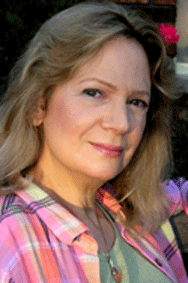The more that you read, the more things you will know. The more that you learn, the more places you’ll go. – Dr. Seuss
March 2nd is the 113th birthday of Theodore Seuss Geisel, known worldwide as Dr. Seuss, author of countless beloved children’s books. It’s widely known that Dr. Seuss was not a doctor of anything (although an honorary doctorate was conferred on him by his alma mater, Dartmouth, in 1956). He added the “Dr.” to his penname in 1927 because his father had always wanted him to practice medicine. It’s also common knowledge that the celebrated author of more than 60 children’s books never had children. His standard response was “You make ’em. I’ll amuse ’em.”
What you might not know about the man behind Horton Hears a Who, The Cat in the Hat, The Lorax and other children’s classics that have sold more than 600 million copies, translated into more than 20 languages, is how multifaceted he was. For starters, there were the more than a dozen books Geisel wrote as Theo LeSieg (LeSieg is Geisel spelled backwards) and one as Rosetta Stone.
So, how did Theodore Geisel become Dr. Seuss? He adopted his “Dr. Seuss” pen name during his university studies at Dartmouth College, where he was editor-in-chief of their humor magazine, the Jack-O-Lantern. A drinking infraction while at Dartmouth during the prohibition years nearly derailed his position on the magazine until Geisel surreptitiously wrote under his middle name, Seuss.
Seuss’s professional life began as an illustrator for such publications as Vanity Fair and Life, and for advertising campaigns. His first nationally published cartoon appeared in the July 16, 1927 issue of The Saturday Evening Post — for which he was paid $25. His first ad campaign for Flit, a bug spray, ran sporadically from 1928 to 1941, with its catchphrase, “Quick, Henry, the Flit!” becoming so popular it inspired a song and was used as a punch line for comedians such as Jack Benny and Fred Allen.
At the start of World War II, Geisel became the editorial cartoonist at the New York City newspaper, PM, drawing over 400 political cartoons in two years. Later published in Dr. Seuss Goes to War, Geisel’s political cartoons denounced Hitler and Mussolini, criticized Charles Lindbergh and other “isolationists” who opposed US entry into the war, and strongly supported President Roosevelt’s war efforts while attacking the Republican Party. His cartoons also attacked racism.
In 1942, Geisel’s artistic talents turned to drawing posters for the U.S. Treasury Department and the War Production Board. As a Captain in the U.S. military, he commanded the Animation Department in a Motion Picture Unit of the Army Air Forces, writing training and propaganda films. One of his films became the basis for a commercially released film that won an Academy Award for Documentary Feature in 1947. Another film based on an original Seuss story won the 1950 Oscar for Animated Short Film.
After the war, Geisel focused on children’s books. They inspired numerous adaptations, including 11 television specials, four feature films, a Broadway musical and four television series.
Dr. Seuss books may seem very simply written but they evolved to serve a specific purpose. Following a 1954 Life magazine report on illiteracy among school children, which concluded that children were not learning to read because their books were boring, the director of the education division at Houghton Mifflin compiled a list of 348 words that he felt were important for first-graders to recognize. He asked Geisel to reduce the list to 250 words and to write a book using only those words. Geisel’s challenge was to “bring back a book children can’t put down”. Nine months later, Geisel’s The Cat in the Hat used 236 of the words given to him. It kept Geisel’s drawing style, verse rhythms, and imagination from earlier works but could be read by beginning readers. The success of The Cat in the Hat inspired similar beginner reader books that remain bestsellers to this day.
Geisel’s birthday, March 2, has been adopted as the annual date for National Read Across America Day, an initiative on reading created by the National Education Association. In 2004, U.S. children’s librarians established the annual Theodore Seuss Geisel Award to recognize “the most distinguished American book for beginning readers published in English in the United States during the preceding year”. It should “demonstrate creativity and imagination to engage children in reading” during years pre-K to grade two.
One more thing you may not have known about Seuss: how to properly pronounce his name. It rhymes with “voice”, not “juice”. One of his collaborators on the Dartmouth Jack-O-Lantern set that bit of information to verse:
You’re wrong as the deuce
And you shouldn’t rejoice
If you’re calling him Seuss.
He pronounces it Soice.
Geisel switched to the anglicized pronunciation because it “evoked a figure advantageous for an author of children’s books to be associated with – Mother Goose”.

